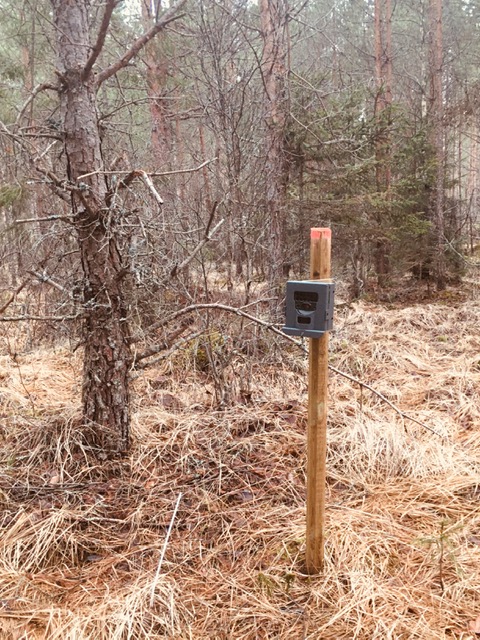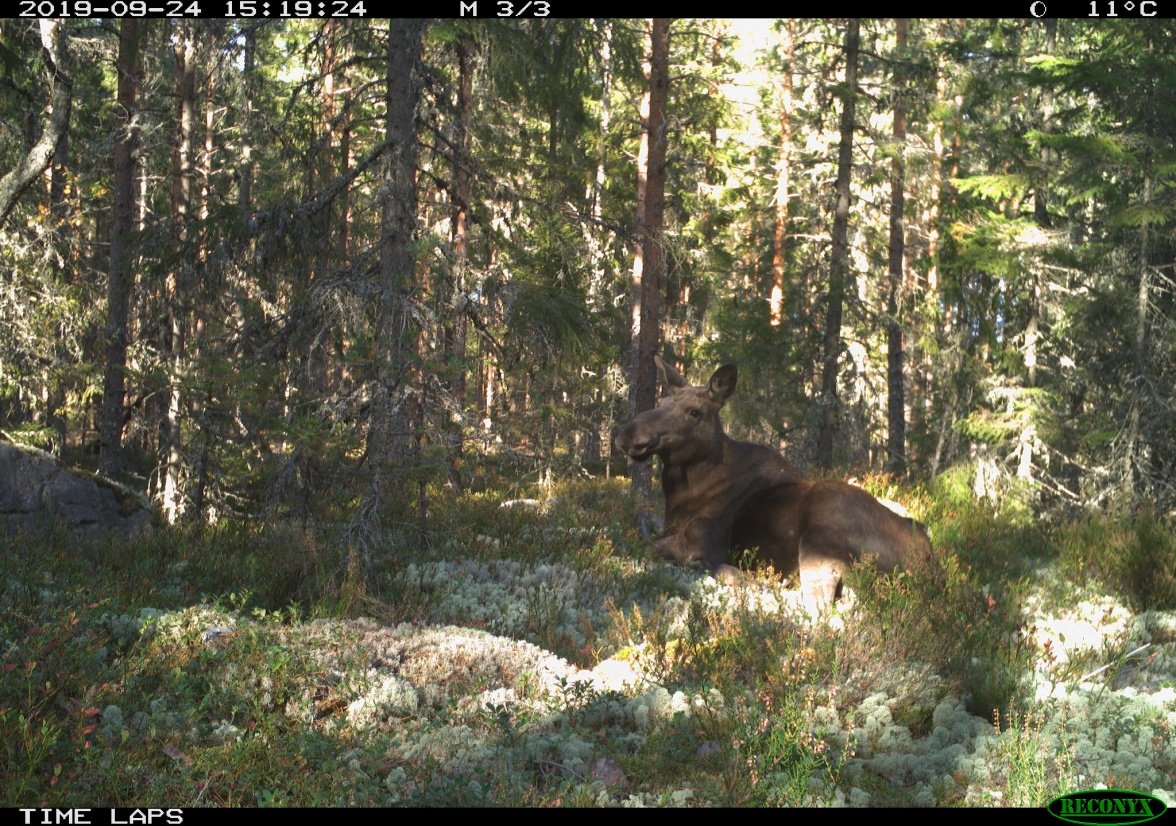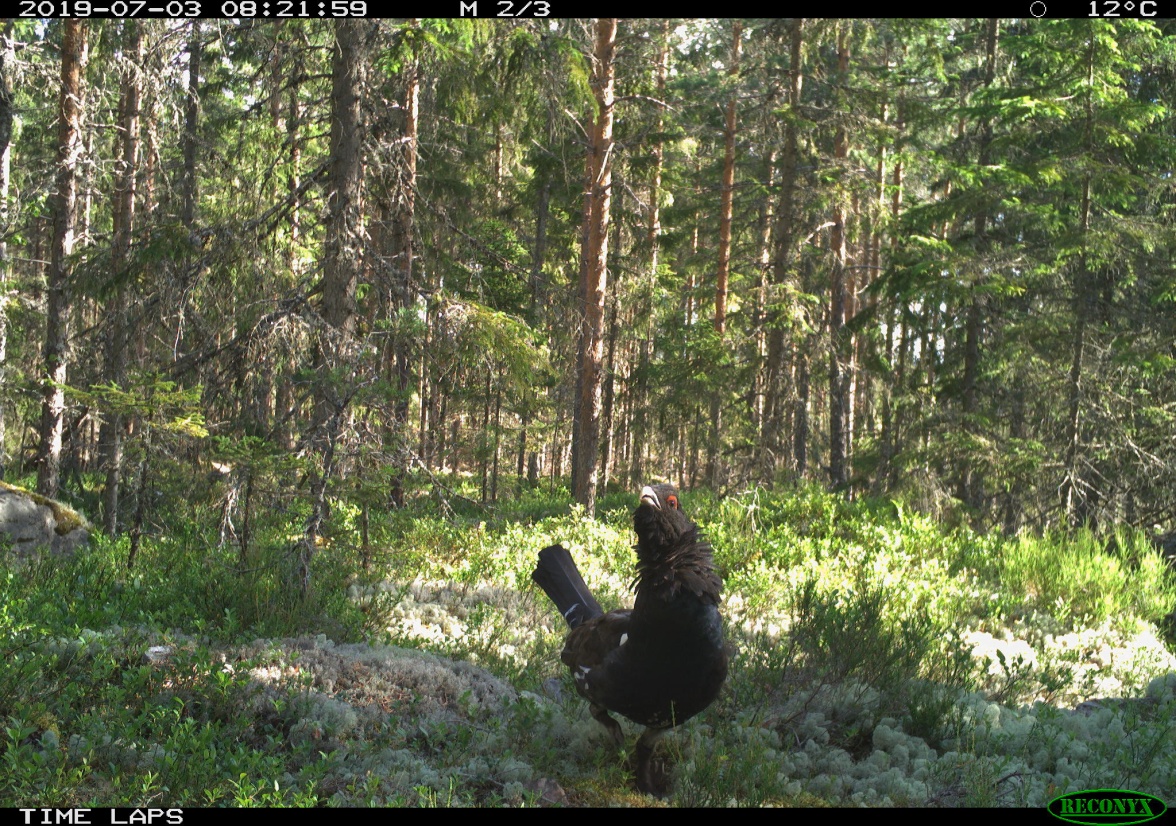A new monitoring series based on photos from wildlife cameras (‘camera traps’) was initiated at Grimsö Wildlife Research Station in 2019. Wildlife cameras are now in use at 32 survey plots where additional data on both wildlife and vegetation are collected. Camera traps have become a common tool in wildlife management and research worldwide and are also frequently used by the general public (partly due to simplified permission procedures). Greater understanding of how to use and interpret camera-based data is therefore important. Part of this project aims to examine the relationship between camera data and traditional population indexes obtained by, e.g. pellet surveys, aerial counts and hunters’ observations.
Wildlife cameras are commonly triggered by movement in the surroundings, heat sensors and/or are set to take photos at fixed intervals. However, the interpretation and how to process this data is not always obvious: Detectability varies among species, e.g. due to size or behaviour; data may be hard to process and sorting might be ineffective due to large storage volume sizes, and the understanding of the data can be challenging in regard to scientific or statistical aspects. Depending on the method design and camera set-up the data can e.g. be used as frequency of photos (of species X) or total number of photos in a given time period, but it may be unclear to which extent these data categories actually reflect the studied population. Using this new monitoring data, we aim to improve the interpretation of camera data and the mentioned challenges biologists are facing with it.

One of the camera traps, here with the camera mounted in a fixed metal box to ensure the exact same position after switches of memory cards and batteries.

Due to the activity pattern of many species, most pictures are taken in the hours of darkness, but here a moose (Alces alces) female just happened to take a rest in front of a camera during daytime. This exemplifies another potential difficulty with cameras; how to process the data when one single visit (‘passage’) by one individual results in hundreds of pictures.

A capercaillie (Tetrao urogallus) male more or less displaying in front of the camera.